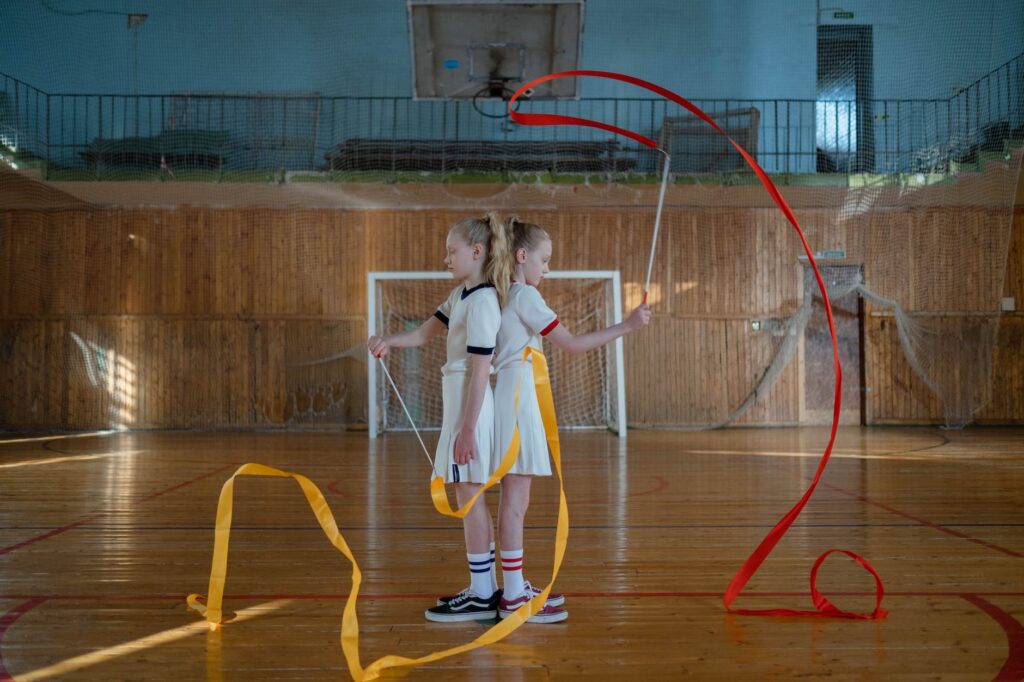
Rhythmic gymnastics is a unique and beautiful sport that is quickly gaining popularity. It combines elements of traditional gymnastics with the grace and beauty of dance. It is a sport that requires strength, flexibility, and coordination, and it is a great way to stay fit and have fun.
Rhythmic gymnastics is a sport that is often overlooked, but it is quickly becoming more popular. It is a sport that is open to all ages and skill levels, and it is a great way to stay active and have fun. Rhythmic gymnastics is a sport that requires strength, flexibility, and coordination, and it is a great way to stay fit and have fun.
Rhythmic gymnastics is changing the way we look at traditional gymnastics. It is a sport that is open to all ages and skill levels, and it is a great way to stay active and have fun. Rhythmic gymnastics is a sport that requires strength, flexibility, and coordination, and it is a great way to stay fit and have fun. It also requires creativity and artistry, as the athletes must choreograph their own routines.
Rhythmic gymnastics is also changing the way we look at traditional gymnastics in terms of the way it is judged. In traditional gymnastics, the judges look for technical perfection and difficulty. In rhythmic gymnastics, the judges look for artistry, creativity, and expression. This allows for a more diverse range of athletes to compete and be successful.
Overall, rhythmic gymnastics is changing the way we look at traditional gymnastics. It is a sport that is open to all ages and skill levels, and it is a great way to stay active and have fun. It also requires creativity and artistry, and it is judged differently than traditional gymnastics. Rhythmic gymnastics is a great way to stay fit and have fun, and it is quickly becoming more popular.
Rhythmic gymnastics is a beautiful and unique sport that can benefit athletes of all ages. It combines elements of ballet, gymnastics, and dance to create a graceful and challenging routine. Rhythmic gymnastics is a great way to stay active, build strength, and develop coordination.
For younger athletes, rhythmic gymnastics can be a great way to develop physical skills. It helps to improve balance, flexibility, and coordination. It also encourages creativity and self-expression. The routines are often set to music, which can help to keep athletes motivated and engaged.
For older athletes, rhythmic gymnastics can be a great way to stay in shape. It is a low-impact sport that can help to improve strength and flexibility. It also helps to improve posture and body awareness. The routines can be tailored to the individual’s fitness level, so it can be a great way to stay active without over-exerting oneself.
Rhythmic gymnastics can also be a great way to build confidence. It encourages athletes to push themselves and strive for excellence. It also helps to develop discipline and focus. The routines require athletes to stay focused and in control of their movements, which can help to build mental strength and resilience.
Overall, rhythmic gymnastics is a great way for athletes of all ages to stay active and develop physical and mental strength. It is a beautiful and unique sport that can help to build confidence and self-expression. So, if you’re looking for a fun and challenging way to stay in shape, rhythmic gymnastics may be the perfect fit for you!
Rhythmic gymnastics is a beautiful and captivating sport that is quickly revolutionizing the way we think about gymnastics. It combines elements of ballet, gymnastics, and dance to create a unique and mesmerizing performance. Rhythmic gymnastics is a sport that requires strength, flexibility, and grace, and it is quickly becoming one of the most popular and competitive sports in the world.
Rhythmic gymnastics is a sport that is constantly evolving and pushing the boundaries of what is possible. It is a sport that encourages creativity and innovation, and it is inspiring athletes to push themselves to their limits. Rhythmic gymnasts are constantly finding new ways to express themselves through their routines, and they are creating stunning and captivating performances that are unlike anything else.
Rhythmic gymnastics is a sport that is quickly becoming more accessible to people of all ages and abilities. It is a sport that encourages athletes to explore their creativity and to push themselves to their limits. It is a sport that is inspiring athletes to take risks and to challenge themselves in ways that they never thought possible.
Rhythmic gymnastics is a sport that is quickly becoming more popular and competitive. It is a sport that is inspiring athletes to take risks and to challenge themselves in ways that they never thought possible. It is a sport that is encouraging athletes to explore their creativity and to push themselves to their limits.
Rhythmic gymnastics is a sport that is revolutionizing the way we think about gymnastics. It is a sport that is inspiring athletes to take risks and to challenge themselves in ways that they never thought possible. It is a sport that is encouraging athletes to explore their creativity and to push themselves to their limits. It is a sport that is quickly becoming more popular and competitive, and it is inspiring athletes to create stunning and captivating performances that are unlike anything else.